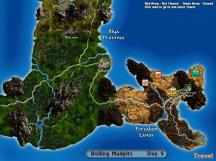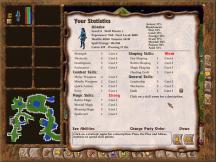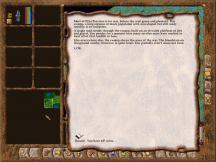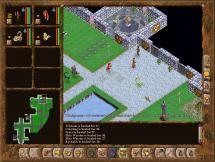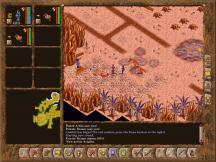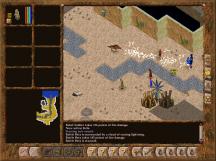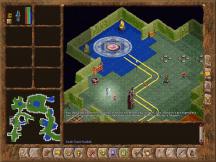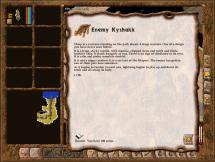Geneforge 4: Rebellion - A Review
Whenever Spiderweb’s games are discussed someone is guaranteed to say, “if only Jeff Vogel could get hired by one of the big guys” – an in-a-perfect-world scenario they dream would leverage Vogel’s writing and design talents with the production values of a BioWare or Bethsoft. Geneforge 4: The Rebellion showcases that talent in what is arguably Spiderweb’s best game to date but the iterative engine improvements may not sway critics. There’s no physics system or motion-captured animation, so it’s all about the quality of the content and the world Vogel weaves with text and 90’s era graphics.
If you’ve played any of Spiderweb’s games, Geneforge 4 will feel instantly familiar – albeit with a number of welcome small improvements. For those new to Geneforge – or Spiderweb games in general – Rebellion is an isometric, turn-based CRPG set in an original fantasy world with a dash of sci-fi. The rulers of Terrestria are the Shapers – an elitist magical guild with the power to create and mold life, ranging from living tools to powerful monsters to assist with their domination over the general populace. Ultimately, some of the downtrodden form a rebellion that precipitates a devastating ongoing war, chronicled in the first three games.
Unlike previous Geneforge games where the player takes the part of a young Shaper, Geneforge 4 sees the player as a new recruit to the Rebellion. The long war has ravaged the land, leaving a near post-apocalyptic scenario of wastelands and destroyed settlements. As the game opens, the better-resourced Shapers have won back much territory and are encroaching on the last Rebel bastion in the southeast.
The game starts with a very basic character creation process, where the player selects one of five classes (each with varying prowess in the domains of shaping, magic and combat). After naming the character, it’s straight into the fray. Rebellion establishes a strong atmosphere of inferiority and isolation from the outset, which is one of the key differences from the previous games in the series. The basic gameplay across the series is essentially the same, but Rebellion wants you to feel hunted and outmatched, and sets out to achieve that goal with gusto.
Much of Geneforge 4 is based around a long journey. Like most CRPGs, as you explore you’ll meet NPCs with information or resources sometimes relevant to the main goal as well as tasks of their own to undertake as side-quests. The game is broken down into five chapters, although they aren’t strictly presented as such; in essence there are several large sections of the game where you’ll need to complete something before moving on.
Geneforge 4’s quests run the gamut from simple fetch or kill assignments to multi-part adventures that run over a large portion of the game. Vogel writes descriptive, evocative text that introduces the characters and situations with style and wit – almost like having a skilled Game Master describing a scene in a pen-and-paper game. Dialogue is an important part of the game, with many important encounters moved forward through conversation. The dialogue choices available and the outcome from certain options can change with the character’s leadership skill – for example, tasked with dealing with a bandit group that has cut off a town’s trade routes, characters with a low leadership skill will likely find diplomacy fails and combat is inevitable, while those with a higher leadership ability may have additional dialogue options that open up other avenues.
And then there are the factions. The central theme of Geneforge 4 is the battle between the Shapers and the Rebellion and though the player starts as a junior member of the Rebellion, there are many opportunities to join the Shapers (or play both sides for a while - and those that search carefully may find other possibilities). While the Shapers are superficially portrayed as the oppressors, the Rebellion has its share of dark corners – at least the Shapers maintain law and order – and where do humans really stand in the alliance with the shaped creatures? The world of Geneforge offers credible reason to support – or fight – both major sides, offering some freedom for players in choosing the motivation of their characters.
Faced with a troop of well-armed Shaper soldiers mercilessly hunting down fleeing peasants, does the player float back into the shadows and allow the slaughter or step in and face a difficult battle? Or were they troublemaking Rebels to be dealt with? Geneforge 4 often uses these scripted encounters to good effect and with surprising emotional depth. Cornered by a Shaper operative, do you choose to betray the location of a Rebellion camp or maintain loyalty? Which holds the better future for humanity? Siding with one faction or another will gradually change your reputation with the different sides and – together with certain key encounters - can affect which areas are accessible and sometimes who will talk with you and how they react. Much of the time you’ll be able to pass as refugee riff-raff, but as your reputation and power grows word will reach some ears. There are a handful of specific turning points in the game and the overall structure of the journey is the same regardless of the faction the player supports but there are plenty of choices that change the shape of the gameworld along the way.
Whether you’ve decided to support the Rebellion or the Shapers, the type of character you’ve developed will infuse the actual blow-by-blow gameplay. Character classes such as the Infiltrator or Servile are suited to soloing while Lifecrafters and Shock Troopers will usually command a small army of creations. Creations are persistent and gain experience, becoming very powerful if they survive long enough – or perhaps you’d rather treat them as temporary diversions and canon-fodder, creating fresh troops as the need arises?
Geneforge 4’s areas are often best suited to certain character types and it isn’t unusual to have to backtrack and find another way forward. Unlike many RPGs that hold player’s hands as they move through linear areas, Geneforge 4 doesn’t shy from placing roadblocks and forcing the player to think about the way ahead. Brute force combat is almost always an option, but the combat is sometimes hard enough that even combat-oriented characters will need to think about alternative routes. Some areas are filled with traps, locks and (new) force fields, providing opportunities for characters with a high mechanics skill but deadly for the average gung-ho combat tank. In almost every case, there are multiple routes to reach every destination.
Speaking of combat, Geneforge 4 employs the same basic turn-based system used in every Spiderweb game – with a few tweaks. The actual experience is quite variable, depending on the type of character and the player’s approach. Solo melee types can be dull, because of the lack of varied attacks or active skills. At the other end of the scale, spellcasting shapers may have a large and varied party to control along with a repertoire of spells, opening up more tactical depth. One key change from previous versions is that an attack can be initiated with only one action-point at the end of a round, which does lend some flexibility.
Another approach is to avoid combat with the surprisingly effective stealth system. Creatures in Geneforge 4 have a line of sight – getting too close to a nasty looking your way will disturb them (indicated by a “?” floating overhead) – getting out of the way fast enough will calm them down. Watching the movement of enemies from out of sight and applying some careful timing (and quick reflexes if spotted) to slip by is quite satisfying. Spiderweb claims the game can be completed with absolutely no direct combat (presumably with a combination of allies, leadership, mechanics and stealth), although I didn't test this fully.
Geneforge 4 differs from nearly every RPG in recent times by presenting a serious challenge - the early areas are treated as a tutorial of sorts but from the middle of the game on, Spiderweb throws several difficult encounters at the player. As mentioned, backtracking and finding an alternative path or rethinking an encounter and deciding to slip past a raiding party isn’t uncommon. Some of these encounters (indeed, whole maps) are entirely optional or designed to suit particular character types, all of which makes for a very different feeling to the strictly linear, carefully balanced play of many RPGs and provides opportunities for different character types to strut their stuff. Balance is a delicate thing and Geneforge 4 flirts with occasional frustration and excessive combat but usually manages to offer something absorbing just around the corner.
Graphics are often the point of any general discussion on Spiderweb’s games. There’s no avoiding the technology is primitive but Geneforge 4 does have some new lighting effects, improved animations and simple weather effects that make the game feel much more friendly. No doubt some will still find the technology below their personal minimum bar but if you haven’t tried a Spiderweb game for a while, the incremental improvements might just be enough to change your mind.
There are three major endings and even more outcomes depending on the actions of your character. The character development system is straightforward, but from solo combat to parties of shaped creations to stealth the gameplay possibilities are varied, not to mention the different quest lines and faction choices. Throw in optional quests and an item creation system and there’s plenty to look forward to in a second or third run through. The story is interesting, though not everyone will be satisfied with the potentially pessimistic endings – but I’d argue they are braver than the usual “and they lived happily ever after” fare.
As I wrap this up, the question of value needs to be addressed. This is the fourth Geneforge outing and, of course, the Avernum series also shares many similarities. Is this really worth your $28? I found this far more absorbing than recent big-name releases and the many hours of RPG gaming contain far more choices than anything released in recent years. The low-tech graphics undoubtedly underpin Vogel’s sustainable model and if you enjoy a deep, traditional RPG experience, this is a reasonable compromise. At the very least, give the generous demo a run through to the end.
Geneforge 4 takes a familiar Spiderweb formula but makes a number of welcome incremental improvements to make their best game to date, with a complex nest of choices and more challenge than many of their previous games or the flashier competition. Sure, Spiderweb has used this basic gameplay model for many games and it’s time for some needed improvements like active combat skills but this is an engrossing, grand adventure from a skilled storyteller that deserves to be played.
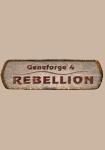
Information about
Geneforge 4: RebellionDeveloper: Spiderweb Software
SP/MP: Single-player
Setting: Fantasy
Genre: RPG
Combat: Turn-based
Play-time: Over 60 hours
Voice-acting: None
Regions & platforms
Internet
· Homepage
· Platform: PC
· Released: 2007-02-05
· Publisher: Spiderweb Software
More information
Other articles
Summary
Pros
- Huge, traditional RPG
- Factions and choices
- Challenging
- Diverse gameplay options
- Turn-based combat
Cons
- Low tech graphics
- Interface still needs improvement
- Non-magical combat needs more depth
- Can be combat heavy


